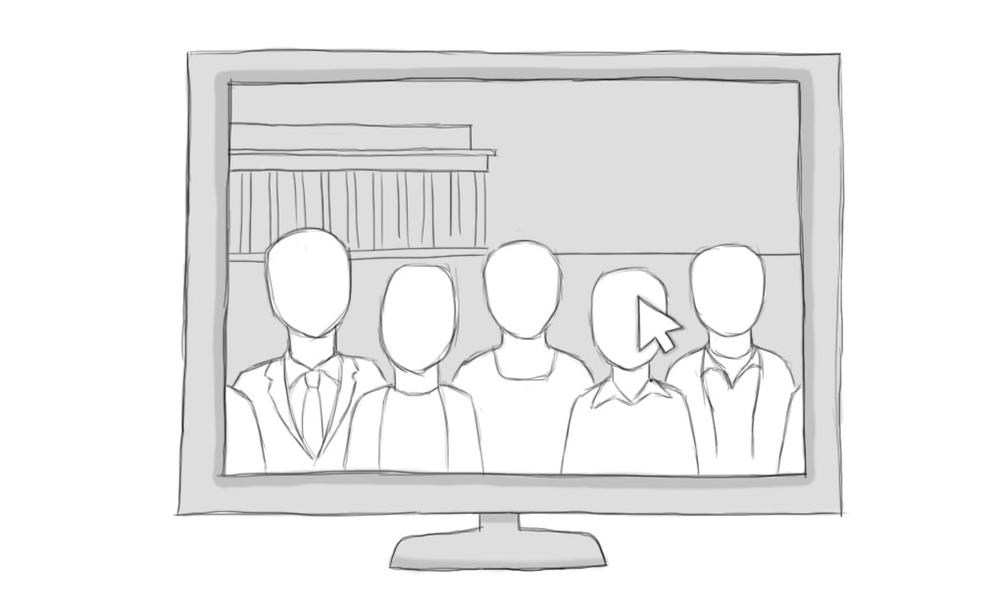
September 06, 2016
For the People, by the People: A User First Approach

President Lincoln’s Gettysburg address is one of the most historic speeches by a US president where he famously said “Government of the people, by the people, for the people, shall not perish from the earth.”
Little did president Lincoln know that his sentiment will carry forward a century and a half later and stay relevant through the technology revolution and beyond. As government hopped on the technology wave and started serving citizens via digital channels like websites, web apps and mobile apps, it seemed like these services were technology centric in the beginning instead of being citizen centric. But technology and, for the purpose of focus for this post, the web, has been an ever adapting amoeba. The focus of services is slowly shifting from technology to citizens as technology has become a mainstream commodity. The onus is not on the hardware, software, servers and networks, but how technology interacts with citizens.
At Digital Services Georgia, User First is one of our 3 tenets. A user is a term that accounts for a person who is likely to use your digital offering. Government organizations need to make sure their websites and services are efficient, fast, and updated to the latest technology. But unfortunately, I have noticed many organizations forget why we have websites in the first place. They forget that their website is a digital extension of their services and not intended to be a mirror reflecting their internal organization.
Citizens do not visit websites to see org charts, welcome messages, smiling photos, or stock imagery that consume a huge part of their screen. They are visiting your website to seek information or access a service so they can move on to their next errand. Any visual element that competes with what citizens are searching for is debris.
The User First Approach
Government is unique as it offers information and services to a variety of users. Like private sector businesses, government agencies cannot afford to just focus on a select user group. However, it is important to know and understand who your core user base is, what devices do they use, what kind of service or network they might be logging in from. These are key factors to make design and technology decisions. Governments need to implement a user centric culture.
This is a paradigm shift from what you might see around you. I have been in several conversations where decisions were made based on organizational goals, stakeholder preferences, technology advantages or limitations and available skillsets. Rarely is there a mention of the user; maybe because the users are not present at the conversation table. If we are choosing to neglect the very target group for whom we are spending a fortune developing a service or a website, we are doing a disservice to the organization and its mission.
At Digital Services Georgia, we have been fierce advocates of the user first approach. Our user first approach includes both sets of users for whom we design and develop:
- Our end users, the citizens. We like to call them citizens. As citizens they have legal rights to seek services and information and as government, we are required to provide citizens with the vital information and services in an efficient manner. This information affects them personally — and sometimes is a matter of life and death.
- State agency employees, the content managers who use the web publishing platform on a day to day basis. This user base is equally important to us for developing our platform features and planning the roadmap.
Every time our product team designs something new, we think about how either set of these users will interact with our design. How will the citizens consume content, and how effectively will the content managers be able to publish and edit content? The user first approach helps in identifying the focus and challenges ahead of time before the development effort kicks in.
User first approach is not only the right thing to do, but also makes business sense. Any organization that chooses to adopt the user first approach, can see value by implementing it in the following ways.
- Know thy user.
When your organization knows your user base, their preferences, challenges and limitations, it makes it easier to design a solution for that use case. This can be accomplished by doing market analysis, user research and user surveys. - Create content and services based on need.
When you create content or design services for your users, you act upon what you have learned and studied about your users. This reduces any needed training or additional information included on pages to walk users through using your application screens. - Reduce operations cost.
When online services and websites get easy to use, citizens prefer to do business online instead of making a trip to the physical location. Moving services online reduces foot traffic to brick and mortar offices and in return ends up saving the organization the expense to staff up to be able to accommodate the traffic. - Reduce call center volume.
Call centers are expensive to run. Any organization looking to cut costs can attest to the fact that making their websites and other information channels content rich can reduce call center volume. You can build an iterative process where you take valuable information from the call center logs and curate content on your website based on common terminology and pain points. - Think of all the users.
While most user centric approaches preach catering to the most prevalent user group, do keep in mind there are users with disabilities that are invisible to analytics. These users deserve the same level of representation as any other user. Make sure your digital properties are accessible based on federal standards, Section 508 and the Web Content Accessibility Guidelines (WCAG 2.0).
If your organization follows the user first approach at every step, you make decisions based on data. Real numbers and research. When you have real data, there is not much room for opinions and personal preferences. In government we tend to see projects tipping to the fancies of stakeholders and/or the HiPPOs of organizations. The work we do affects our citizens’ day to day lives and decisions. Let’s do our best to make sure we, the people who design and develop government services, do it for the people, the citizens, the users. When they come first, we succeed.
Related Links
- Threats to Your Project, Part 1: Surviving the HiPPO Attack
- Threats to Your Project, Part 2: Design by Committee
- Content Strategy Consulting
